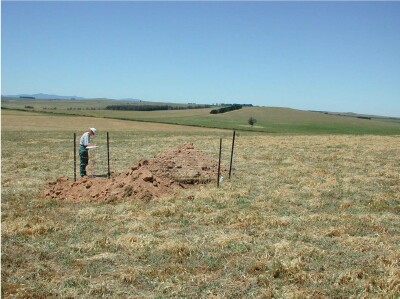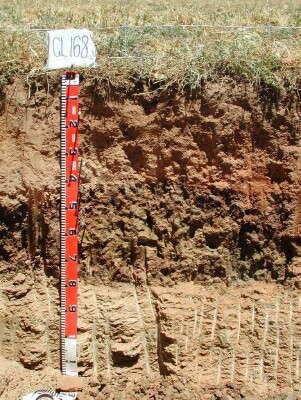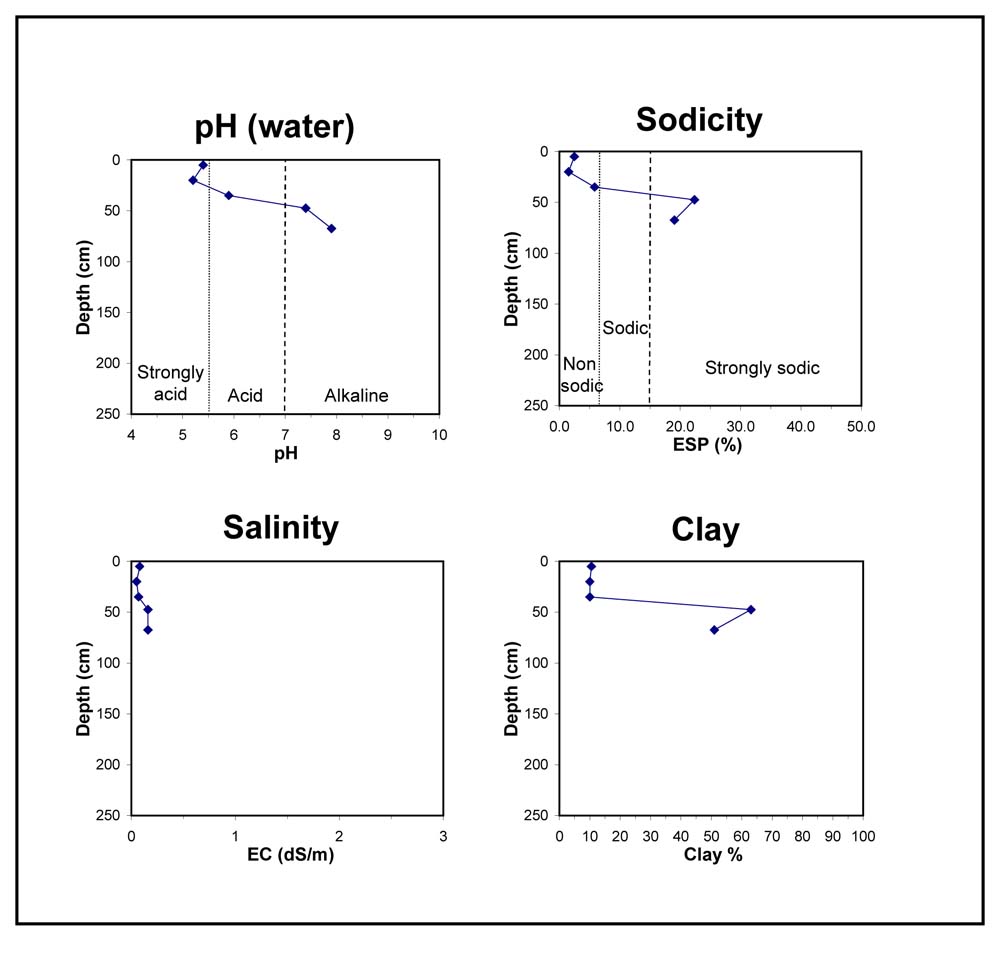GL168
| Site: GL168 | Land Unit: Ararat Granites |
| Aust. Soil Class.: Mesotrophic, Mottled-Mesonatric, Grey SODOSOL (confidence level 1) | |
 | General Land Unit Description: This land unit consists of granitic hills and rises around Ararat. Granitic tors are common on the crests and at the break of slope in some areas. Landslips are evident on the steeper slopes. This site is on a long slope off a rocky crest (GL167). Granite rock outcrop is common at the break-of-slope, although it is generally absent on the slope. The soils are deeper than GL167, although there is still a deep C horizon present. Soil depth is variable. The C horizon tends to act as a barrier for water penetration. The clay B22 horizon has an intermittent gleyed appearance that supports this. The prismatic and angular structure of the subsoil is probably a result of the high dispersibility of the clay. The dominant soil type is a Grey Sodosol, often found on the lower slopes, similar to this site. Chromosols are more likely to occur on the crests and steeper slopes. The steeper slopes and rocky crests would have a lower capability of supporting land use due to land and soil limitations. |
Site Description:
| Slope: 6% | Geology: Ordovician granite |
| Landform pattern: Low hills | Position in landscape: Lower slope |
| Internal drainage: Well drained |
| A1 | 0-10 cm | Dark brown (7.5YR3/3) loamy coarse sand, weak polyhedral structure (10-20 mm), very weak consistence when dry, a few small angular pebbles (2-6 mm), pH 5.4. Gradual transition to: |  |
| A21 | 10-30 cm | Brown (7.5YR4/4) loamy coarse sand, massive, weak consistence when dry, pH 5.2. Gradual transition to: | |
| A22 | 30-40 cm | Brown (7.5YR5/4) loamy coarse sand, conspicuously bleached (7.5YR7/4) when dry, massive, weak consistence when dry, pH 5.9. Clear transition to: | |
| Subsoil | |||
| B21 | 40-55 cm | Brown (10YR4/2) heavy clay, many prominent fine dark red (2.5YR3/6) mottles, strong prismatic (50-100 mm) parting to strong angular (2-5 mm) structure, clay skins are common, pH 7.4. Clear and wavy transition to: | |
| B22 | 55-80 cm | Weak red (10R5/3), heavy clay, medium prominent brownish yellow (10YR6/6) mottles are common, strong prismatic structure (50-100 mm), very few fine manganiferous flecks, clay skins are common, pH 7.9. Sharp transition of variable depth to: | |
| C | 80-180+ cm | Weathered granite |
Key profile features:
- Sandy topsoil
- Acidic topsoil
- Strong texture contrast between topsoil and subsoil
- Strongly sodic subsoil
- Strong dispersive deeper subsoil
- Mottled subsoil



